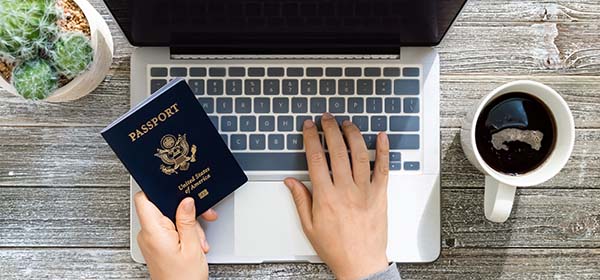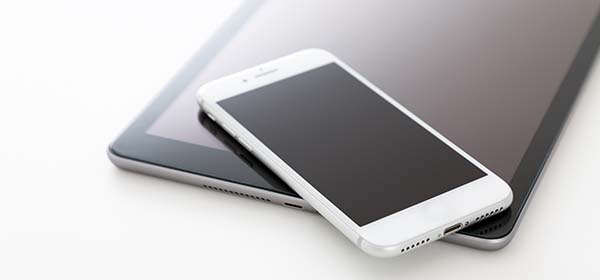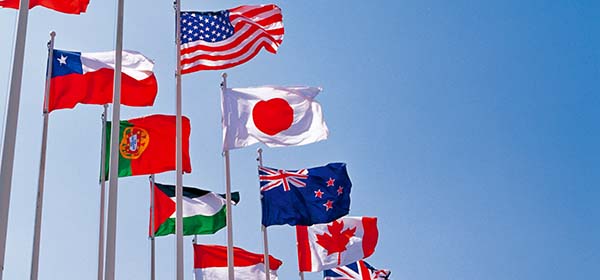Is a visa required for traveling to Hawaii?
Contents

ESTA is required for travel to Hawaii
Travelers visiting Hawaii for sightseeing, short-term business trips, or transit within 90 days are exempted from visa application, but they must apply for ESTA. Under the Visa Waiver Program (VWP), the system established by the U.S. government, those approved for Travel Authorization through ESTA are permitted to travel to Hawaii without holding a visa. Although a visa is not required for general trips to Hawaii, be sure to apply for ESTA before travel.
Those who have been denied entry to the U.S., have not approved of visa application, or have any criminal records in the past may not be permitted to travel by ESTA, and may receive the notification of “Travel authorization declined”. Those who fit in those situations would not be eligible for applying for ESTA, therefore consider applying for a visa at the U.S. embassy. In addition, under the Terrorist Travel Prevention Act, those who have traveled or stayed in Somalia, Yemen, Syria, Libya, Iraq, Iran, Sudan, North Korea, or Cuba after March 1, 2011, are generally not permitted to travel to the U.S. by using ESTA.
The U.S. Department of Homeland Security (DHS) and the U.S. Embassy recommend completing ESTA (the Electric System for Travel Authorization) application by 72 hours before departure for the acquisition of “the Travel Authorization”. On a general trip to Hawaii, an ESTA application is required regardless of age. When you make a trip in a family or a group, complete the application of all the members in advance.
More information for the Visa Waiver Program, please check here.
What you need to enter Hawaii
- A valid passport
Passport requirements
As of April 1, 2016, travelers going to the U.S. under ESTA must have an E-passport (a passport with an IC chip). The E-passport can be identified by a mark on the cover indicating the presence of the IC chip. In addition, Japanese nationals are exempt from the requirement to have a passport with a remaining validity of at least six months when traveling to the U.S., as they are subject to the “Six Month Rule” set forth by the Six Month Club. Under this system, Japanese passport holders can enter Hawaii with a passport valid until the return date.
- Round trip air/sea ticket or air/sea ticket heading for third country from Hawaii
*As of January 2025, customs declaration forms that used to be distributed on aircraft have been eliminated. You will be asked to show your passport at immigration in Hawaii.
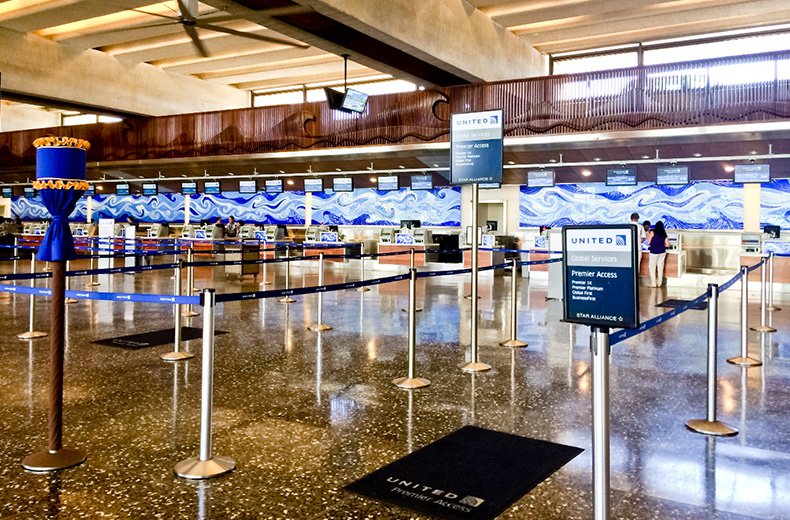
From arrival to immigration in Hawaii
Upon arrival in Hawaii, you will need to go through various procedures including immigration screening. This process can be stressful for first-time travelers who lack confidence in English. To ease your anxiety, let us explain how the immigration procedures work.
Make sure to have your belongings with you when exit the aircraft
Honolulu’s Daniel K. Inouye International Airport offers expedited immigration screening for arriving travelers. Always carry your carry-on luggage with you and follow the instructions of the flight crew or airport staff when disembarking from the aircraft. Take a Wiki Wiki Shuttle, an articulated bus that stops near the parking lot, to get to the immigration area. If the shuttle is full, wait there for the next one. The shuttle will take you to the entrance of the immigration area in a few minutes.
Follow the directions to the “Foreign Passport” immigration area
Follow the directions to the immigration area after getting off the bus. Japanese nationals should line up at the “Foreign Passport” counter on the left side of the main entrance since foreign travelers and U.S. citizens have different window. The window labeled “American Citizen” is for U.S. citizens.
Check the required documents while waiting
Proceed to the “Foreign Passport” counter and wait in line until the immigration officer calls you “Next.” Make sure to prepare all the required documents while waiting to ensure a prompt submission. The officer will verify the authenticity of your visa, whether you plan to stay over the permitted period, if the purpose of your entry has been approved, and so on. To avoid any suspicion of fraud or illegal stay, make sure to prepare your one-way or return airline ticket receipts, schedules during your stay, and a list of places to visit in advance.
In 2021, Daniel K. Inouye International Airport in Honolulu introduced a biometric authentication process called the “Simplified Arrival Program”. It is expected to simplify immigration screening replacing the automated immigration terminal “Kiosk” (APC), which has been in operation since February 2016. The program compares a computer-taken photo with a passport photo and takes fingerprints to determine if it is the same person. The high-precision authentication function automates document screening, and there is a high possibility that, in the future, fingerprints will not be required for individuals with a travel history.
What is the Simplified Arrival Program?
It is an immigration screening method introduced by the U.S. Customs and Border Protection (CBP) to use facial biometric verification to confirm the identity of travelers.
Honolulu’s Daniel K. Inouye International Airport introduced this system in 2021, replacing the automatic immigration terminal kiosk (APC) which was launched in February 2016. The use of high-precision biometric information has led to the automation of document screening.
Questions at the immigration would be in English
The immigration inspector will ask the traveler questions in English about his/her purpose and length of stay. Review the general questions asked at immigration.
(1) What is the purpose of your trip?
If you are asked, “What is the purpose of your trip?”
If it is for a sightseeing, please answer “Sightseeing”
(2) If you are asked, “How long are you staying?”
Answer the number of days of your stay, e.g. “5 days” for 5 days, “One week” for 7 days. You may be asked “When are you going back home?” instead of the number of days you are staying in the U.S. In that case, answer the date of your return flight. If you are unable to give the date in English immediately, present your return ticket.
(3) If you are asked, “Where are you going to be staying?”
Please provide the name of the hotel or the address of the family/friend’s home where you will be staying in Hawaii. If you have difficulty answering in English, present your accommodation on the customs declaration form.
If you do not understand the meaning of the question, reply “Please once more”. The immigration officer will give you specific examples such as “sightseeing?” or “5days? You can answer with “Yes” or “No”. As a general rule, questions related to immigration are to be exchanged in English. Keep a note or register the words and English conversation you think you will need in your smart phone.
Fingerprint Collection
Your fingerprints will be taken after you have answered the immigration questions. Place your finger on the designated device when the officer indicates “Finger print” (fingerprint). They will not be used for any purpose other than immigration inspection.
Immigration inspection is completed with the taking of a portrait photograph
Photo of your face will be taken with a camera after fingerprinting. Remove your hat and sunglasses before the photo. The passport you receive from the immigration inspector is now stamped for authorizing your stay in Hawaii. Leave the screening area by saying “Thank you”.
Pick up your baggage
Take the escalator to the baggage claim area on the 1st floor after clearing immigration. Wait in front of the turnstile displaying your flight number and pick up your checked baggage.
Staff will arrange all baggage transferred from the turnstiles in one place at Daniel K. Inoue International Airport. If you cannot find your baggage after one round of the turnstiles, ask a staff member in the vicinity. If your baggage is damaged or lost, present your baggage tag to the airline staff and declare it. Explain your situation in detail to the attendant and receive the necessary documents to process your insurance application.
Declaration procedures at the customs inspection station
Once you have picked up all your luggage at the baggage claim area, please have your passport ready and proceed to the customs inspection area. If you do not have any items to declare, head to the green line, go through the gate, and proceed to the exit. If you have something to declare, go to the red line and complete the tax return procedure. Even if you are on the green line, if you are requested by an officer to be inspected, you must move to the red line and follow the instructions. If an officer points out a possible false declaration, a strict examination will be conducted in a separate room. Please be aware that if any violations are confirmed, you may face significant fines. Make sure to check the duty-free allowance for entering Hawaii in advance and make an accurate declaration.
Duty free scope of entry into the U.S. including Hawaii
- Liquor: approximately 1 litter
- Cigarettes: 200 cigarettes, 10 individual heated cigarettes, 100 cigars
- Souvenirs: total overseas market value not exceeding $100
- Others: Cash or equivalent checks (including securities) not exceeding $10,000
※Alcohol and cigarettes (cigars) are prohibited by law for those under 21 years of age
Prohibited items from being brought into the U.S., including Hawaii
- Animals and plants: Fresh fruits and vegetables, seeds, bulbs, fresh flowers, insects, and taxidermy of animals/wildlife etc.
- Meat products: Non-U.S. meat and meat products such as ham and sausage, cup noodles, soups, bouillon (seasonings in general), snack foods, dried meat, etc. that contain or are processed with non-U.S. meat.
※Cheeses that do not contain meat, and processed foods that contain eggs are permitted to be brought in.
To the arrival lobby (exit)
There are two exits for international arrivals at Daniel K. Inoue International Airport. Tourists as a part of the group tour should go to “EXIT 1” (group exit) on the left side of the front, and individual visitors should go to “EXIT 2” (individual exit) on the right side of the front, both of which are located on the 1st floor (arrival lobby). “EXIT 2” (individual exit) is convenient for those taking a cab, TheBus, or shuttle bus to the car rental center. If you are arriving on a tour, the staff of the tourist agency (the Tourism Association staff?) will be waiting for you at “EXIT 1” (group exit) to follow the directions to the shuttle bus.
The ridesharing services, such as Lyft and Uber, are located on the 2nd floor (departure lobby). There are three rideshare pickup zones (one in Terminal 1 and two in Terminal 2), and you should go to the second floor after you have collected your baggage and cleared customs. Terminal 1’s rideshare picukup zone is near Lobby 2, and Terminal 2’s rideshare pickup zones are between Lobbies 5 and 6, as well as near Lobby 8. Lobby numbers are displayed overhead in the aisles.
Points to keep in mind when using ride-share services
Keep in mind the size and quantity of suitcases you bring when using a Lyft or Uber from the airport.
Lyft recommends the use of the “Lyft XL,” which can seat up to six passengers, even for groups of four or less if the luggage cannot be loaded into a standard four-door car. Uber also recommends the “uberXL” for similar situations which can accommodate up to six passengers in a large vehicle. If you have more than 4 people or a lot of luggage, carefully consider the size of the vehicle before requesting a ride.
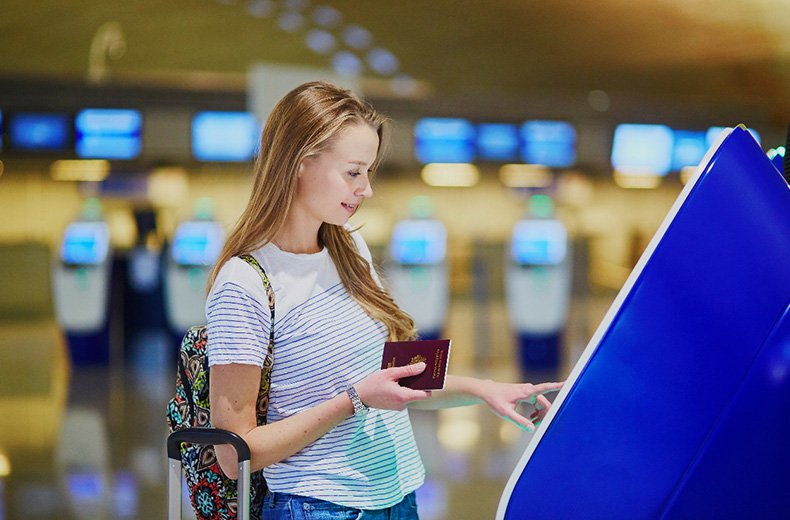
Use of the Automated Passport Control (APC) Kiosks
In 2021, Daniel K. Inouye International Airport in Honolulu introduced a biometric authentication process called the “Simplified Arrival Program”. It is expected to simplify immigration screening replacing the automated immigration terminal “Kiosk” (APC), which has been in operation since February 2016. This program utilizes facial biometrics for automated document screening, resulting in a safer and faster screening process.
Airports where kiosks (APC) are available
As of January 2024, APC kiosks have been installed at 8 airports including Honolulu airport in Hawaii.
- Albuquerque International Airport (ABQ)
- Oakland International Airport (OAK)
- Ontario International Airport (ONT)
- Philadelphia International Airport (PHL)
- Salt Lake City International Airport (SLC)
- St. Petersburg- Clearwater International Airport (PIE)
- T.F. Green International Airport (PVD)
- Vancouver Seaport (YHC)
How to use the APC Kiosk
This program is a CBP (U.S. Customs and Border Protection) initiative designed to expedite the immigration process by automating the clearance process. There is no need for pre-registration or membership, and the personal data is securely handled and protected by CBP security. Travelers can utilize the self-service APC kiosks to expedite processing without having to fill out a customs form. To use the kiosk, travelers should scan their passport, take a photo, and answer questions about their background and biographical information. After answering the questions, hand over the issued receipt and your passport to the staff to complete the procedure. The kiosk can also process all family members residing at the same address together. The kiosk is available for travelers who are participating in the Visa Waiver Program (VWP), U.S. and Canadian citizens, and those entering Hawaii on a B1/B2 (business/tourist) or C1/D (transit/crew visa) visa. It simplifies complicated immigration procedures, reduces waiting times, and is recommended when traveling.
UPDATE : 2025/06/02

